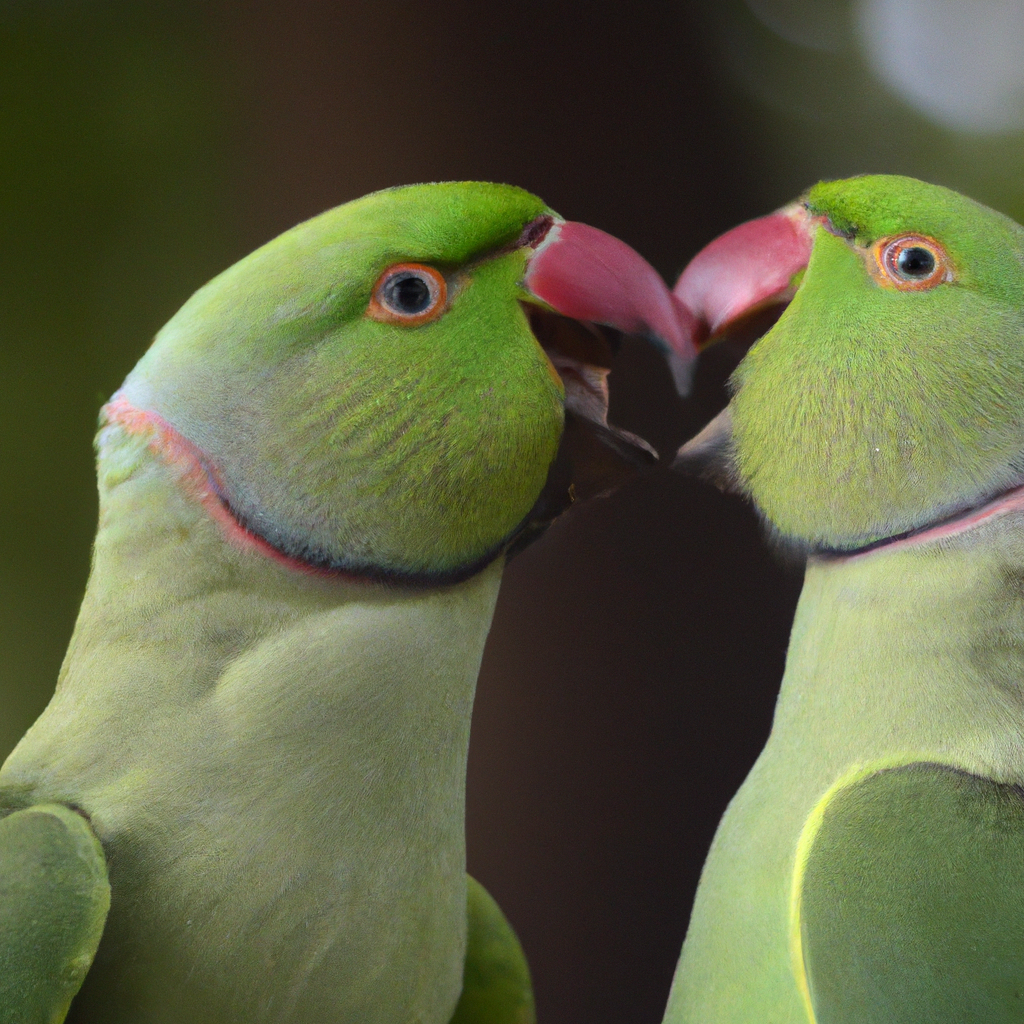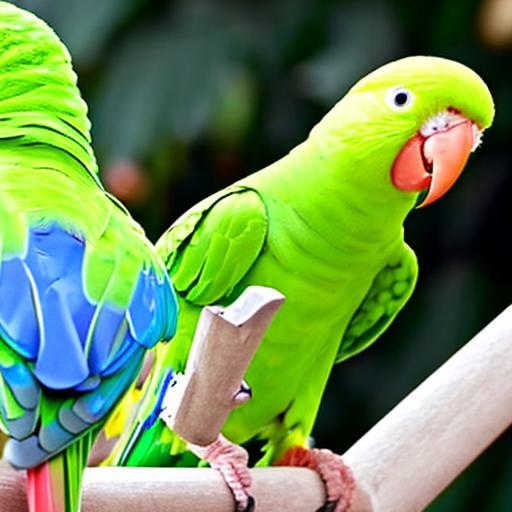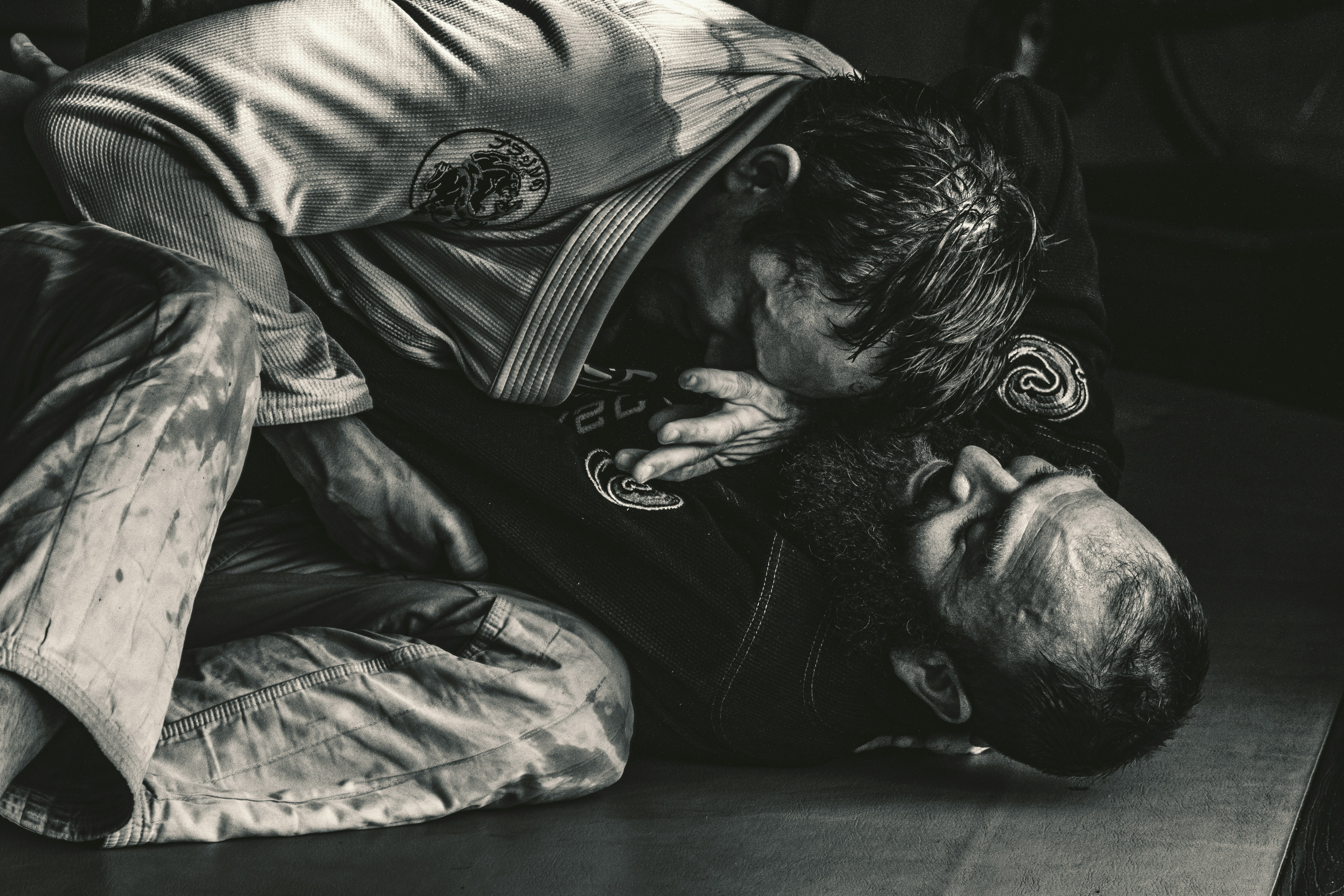In this article, you will discover the reasons behind the unsettling phenomenon of parakeets engaging in aggressive behaviors towards one another. By understanding the root causes of these clashes, you will be equipped with the knowledge to identify and address the underlying issues that may be contributing to their fighting. By implementing effective strategies, you can help create a harmonious environment for your parakeets, promoting their well-being and fostering peaceful cohabitation.
Environmental Factors
Lack of Space
One of the potential causes of parakeet fighting can be attributed to a lack of space within their environment. When birds are confined to a small cage or an inadequate living area, they can become agitated and stressed. This can lead to increased aggression and territorial disputes between parakeets, resulting in fights. Providing a spacious and properly sized enclosure is crucial for promoting a harmonious living environment for your birds.
Inadequate Cage Setup
Another significant environmental factor that can contribute to parakeet fights is an improper cage setup. A poorly designed cage can lead to stress and tension among parakeets, ultimately triggering aggressive behavior. It is essential to ensure that the cage is equipped with appropriate perches, toys, and feeding stations. Additionally, offering hiding spots and separate feeding stations can help create a more comfortable and less confrontational environment for your birds.
Lack of Privacy
Parakeets, like many other birds, require privacy and personal space to thrive. If your birds do not have suitable areas within their cage where they can retreat and feel secure, it can lead to increased stress and aggression. Providing enclosed spaces or hideouts within the cage, such as small tents or covered perches, will allow your parakeets to have their privacy and minimize the likelihood of fights.
Inappropriate Lighting
Lighting plays a crucial role in regulating the behavior and overall well-being of parakeets. Insufficient or inappropriate lighting can disrupt their natural rhythms, leading to increased irritability and aggression. It is essential to ensure that your birds have access to natural light or artificial lighting that closely mimics the natural cycle of day and night. This will promote a more balanced and calm environment for your parakeets, reducing the likelihood of confrontations.
Social Dynamics
Territorial Disputes
Parakeets are inherently territorial creatures, and conflicts can arise when multiple birds are housed together in limited spaces. Establishing territories within the cage can lead to disputes and fights, as each bird tries to assert dominance and protect its space. Providing separate food and water stations can help minimize territorial disputes and create a more peaceful coexistence among your parakeets.
Hierarchy and Dominance
In any group of parakeets, a hierarchy will naturally develop, with one or more birds assuming a dominant role. Fighting may occur as birds establish and maintain their positions within the social structure. It is crucial to observe and monitor their interactions, ensuring that aggression does not escalate to a harmful level. Interventions, such as separating dominant or aggressive birds temporarily, may be necessary to restore harmony within the group.
Competition for Resources
When resources, such as food, water, and toys, are limited, parakeets may engage in aggressive behavior to assert their access to these essential elements. Providing an adequate number of feeding stations, water containers, and toys can help reduce competition and minimize the likelihood of fights. Ensuring that resources are evenly distributed throughout the cage will promote a more balanced and peaceful environment for your parakeets.
Lack of Bonding
Parakeets are highly social birds and thrive in bonded pairs or small flocks. If they lack companionship or a strong bond with fellow birds, it can lead to increased stress and aggression. Introducing compatible parakeets or providing additional socialization opportunities can help alleviate any feelings of loneliness and reduce the likelihood of fights. It is vital to ensure proper introductions and monitor their interactions to ensure positive social dynamics among your parakeets.
Mating and Reproduction
Hormonal Changes
During breeding seasons or when hormonal changes occur, parakeets may exhibit more aggressive behavior towards each other. This aggression can be a result of increased territoriality and a desire to protect potential nesting sites. Understanding the natural hormonal cycles of your parakeets and providing appropriate outlets for their nesting instincts can help alleviate tensions and minimize fights.
Nesting Instinct
Parakeets have a strong nesting instinct, and conflicts can arise when multiple birds compete for the same nest or nesting site. Providing multiple nesting boxes, each in separate areas of the cage, can help reduce the chances of fights. Ensuring that nesting materials, such as appropriate bedding and material for constructing nests, are readily available can also help redirect their nesting instincts and reduce aggression.
Conflict over Mate
If multiple parakeets within the same cage are of breeding age, conflicts can occur over selecting a mate. Competition for the attention of a particular bird can lead to fights, as each parakeet tries to establish a pair bond. If this becomes an ongoing issue, it may be necessary to separate the birds or provide them with individual cages to reduce tensions and potential fights.
Incompatible Breeding Pairs
When attempting to breed parakeets, it is crucial to ensure that the selected breeding pairs are compatible. Incompatibility between birds can lead to aggression, fights, and even injury. It is essential to consult with an experienced avian veterinarian or breeder to ensure that you are pairing birds with compatible personalities and temperaments. This can help minimize potential conflicts and promote successful breeding.
Illness or Physical Discomfort
Pain or Sickness
Parakeets may exhibit heightened aggression when they are in pain or feeling unwell. Illnesses, injuries, or underlying health conditions can cause discomfort and frustration, leading to fights with cage mates. Regular health check-ups with an avian veterinarian can help identify and address any potential health issues, reducing the likelihood of aggressive behavior stemming from physical discomfort.
Injury or Disability
Parakeets with injuries or disabilities may become more vulnerable and defensive, leading to increased aggression towards their cage mates. Providing appropriate accommodations for these birds, such as additional perches or ramps, can help minimize the likelihood of fights. It is crucial to observe their interactions and intervene if aggression becomes excessive or poses a risk to their well-being.
Unpleasant Physical Conditions
An uncomfortable or unsanitary living environment can contribute to the aggression and fights among parakeets. Birds living in dirty or crowded conditions may become stressed or agitated, leading to increased aggression. Regular cage cleaning, providing fresh food and water, and maintaining a hygienic environment can significantly reduce the likelihood of fights stemming from unpleasant physical conditions.
Unresolved Medical Issues
Parakeets with ongoing or untreated medical issues may experience discomfort or pain that can contribute to aggression. Ensuring prompt and appropriate medical intervention for any health concerns is crucial in managing and preventing fights among parakeets. Regular veterinary care and adherence to recommended treatments can help minimize aggressive behavior associated with unresolved medical issues.
Introduction of New Birds
Integration Challenges
Introducing new birds into an existing parakeet group can be a challenging process. New birds may be seen as intruders by the resident birds, leading to fights and territorial disputes. Proper introductions, gradually increasing social interactions, and providing separate but visible spaces for the birds to become familiar with each other can help ease integration challenges and minimize aggression.
Group Size and Dynamics
The size and composition of the parakeet group can influence the occurrence of fights. Overcrowding can lead to increased stress and competition for resources, potentially triggering aggressive behavior. Additionally, an imbalance in gender or incompatible personalities within the group can contribute to conflicts. It is important to maintain an appropriate group size and ensure compatibility among the birds to promote a more harmonious living environment.
Establishing a Pecking Order
When introducing new birds, it is common for a pecking order to be established. This involves parakeets determining their positions within the social hierarchy, often through displays of aggression. It is essential to allow natural dynamics to unfold while monitoring the interactions closely. Only intervene if aggression becomes excessive or poses a risk to the birds’ safety.
Competition for Resources
Introducing new birds into an established group can lead to increased competition for resources, such as food, water, or toys. Ensuring an adequate supply of resources for all birds and providing multiple feeding stations can help reduce fights resulting from resource competition. It is important to monitor the availability of resources and intervene if necessary to maintain a balanced and peaceful environment.
Environmental Enrichment
Providing Enough Toys
Parakeets are intelligent creatures that require mental stimulation to prevent boredom and aggression. Insufficient access to toys or offering the same toys for extended periods can lead to increased frustration and aggression. Providing a variety of toys that are rotated regularly can help keep your parakeets entertained and engaged, reducing the likelihood of fights.
Varied Perches and Platforms
Offering a range of perches and platforms within the cage can help provide enrichment and promote physical exercise. Different textures and diameters of perches can help keep your parakeets’ feet healthy and engage their natural behaviors. This can help alleviate any restlessness or tension that may lead to fights between parakeets.
Mental Stimulation
In addition to physical exercise, parakeets require mental stimulation to prevent boredom and aggression. Interactive toys, puzzles, and foraging opportunities can help engage their cognitive abilities and redirect any pent-up energy. Providing such mental stimulation can help prevent fights and contribute to a more enriched and harmonious environment for your parakeets.
Access to Natural Elements
Parakeets, despite living in captivity, still have an innate connection to nature. Providing natural elements within their environment, such as safe tree branches or live plants, can help satisfy their instinctual need for a natural setting. These elements can promote exploration, foraging, and a sense of well-being, diminishing any potential aggression resulting from environmental dissatisfaction.
Behavioural Modification Techniques
Positive Reinforcement
Using positive reinforcement techniques can be an effective approach to modify unwanted behavior in parakeets. Rewarding desired behavior, such as peaceful coexistence or engaging with toys, can help reinforce positive behaviors and reduce aggressive tendencies. It is essential to provide immediate and consistent rewards to ensure the association between the behavior and the positive reinforcement.
Time Out Method
If a parakeet becomes aggressive or engaged in a fight, using a time-out method can help redirect their behavior and provide an opportunity to calm down. Moving the aggressive bird to a separate, quiet area temporarily allows them to disengage from the situation and prevent further escalation. It is crucial to ensure the safety and well-being of all birds involved during the time-out period.
Separation and Individual Attention
Offering individual attention and interaction with each parakeet can help address any feelings of jealousy or competition that may lead to fights. Spending quality time with each bird separately, engaging in activities they enjoy, can help reinforce positive relationships and reduce aggression stemming from attention-seeking behavior.
Discouraging Aggressive Behavior
When parakeets exhibit aggressive behavior, it is essential to discourage and redirect their behavior effectively. Clapping your hands or using a firm tone of voice to interrupt the aggression can help create a pause, giving you an opportunity to redirect their attention or offer positive reinforcement. Consistency and patience are key in modifying aggressive behavior.
Socialization and Bonding
Increasing Quality Time
Devoting quality time to interact with your parakeets individually and as a group can help strengthen the bond between you and your birds. Engaging in activities they enjoy, such as gentle petting or offering treats, can help foster positive interactions and reduce the likelihood of fights stemming from attention-seeking behavior.
Encouraging Companion Activities
Parakeets thrive on social interactions with their companions. Encouraging activities that promote bonding and companionship, such as preening each other or engaging in synchronized flight, can help strengthen their social connections and reduce aggression within the group. It is important to ensure compatibility and monitor their interactions to avoid any potential conflicts.
Positive Social Interactions
Promoting positive social interactions among your parakeets is crucial in minimizing fights. Pairing birds with compatible personalities or introducing new companions gradually can help foster harmonious relationships. It is essential to observe and monitor their interactions closely to ensure that they are positive and not escalating into aggression.
Building Trust and Understanding
Trust and understanding between you and your parakeets are vital in maintaining a peaceful and mutually fulfilling relationship. Consistency in care, providing a safe environment, and respecting their boundaries can help build trust. Understanding their body language and responding appropriately to their needs can further strengthen the bond and reduce the likelihood of aggressive behavior.

Consulting an Avian Veterinarian
Identifying Underlying Health Issues
If fights persist despite efforts to address behavioral and environmental factors, it is crucial to consult with an avian veterinarian. The veterinarian can conduct a thorough examination of your parakeets and identify any underlying health issues that may be contributing to the aggression. Addressing these health concerns can significantly improve their overall well-being and reduce fights.
Assessing Compatibility and Sexes
An avian veterinarian can also provide guidance in assessing the compatibility of birds within a group and their genders. This can help ensure that birds are appropriately paired or that group dynamics are balanced, minimizing conflicts related to incompatible genders or personalities.
Hormonal Control and Treatments
Hormonal changes can significantly impact the behavior of parakeets and trigger fights. An avian veterinarian can offer advice and potential treatments to control hormonal changes and prevent aggression. This may include recommendations for adjusting lighting, diet, or medication for hormonal regulation.
Medical Intervention or Recommendations
In some cases, medical intervention may be necessary to address specific health issues contributing to aggression in parakeets. An avian veterinarian can provide appropriate medical treatments or recommend necessary procedures to alleviate any pain, discomfort, or underlying infections. These interventions can help reduce aggressive behavior and promote a healthier living environment for your parakeets.
Seeking Professional Help
Certified Avian Behaviorist
If the aggression and fighting among your parakeets persist despite your best efforts, seeking help from a certified avian behaviorist is a valuable option. These professionals specialize in understanding and modifying bird behavior, providing individualized guidance and strategies for addressing aggression and promoting harmonious social dynamics.
Parrot Trainer or Consultant
Parrot trainers or consultants can offer invaluable expertise in modifying aggressive behavior and promoting positive social interactions among parakeets. With their knowledge and experience, they can provide targeted training techniques and practical advice for managing bird aggression effectively.
Avian Ethologist or Expert
Consulting an avian ethologist or expert in parakeet behavior can provide valuable insight into the complex social dynamics and communication patterns of these birds. Through in-depth observations and analysis, they can identify the underlying causes of aggression and provide evidence-based recommendations for fostering a peaceful living environment.
Parakeet Support Groups
Joining parakeet support groups or online communities can connect you with fellow parakeet owners who have experienced similar challenges with aggression. In these groups, you may find empathy, advice, and guidance from individuals who have successfully managed and resolved aggressive behavior in their own parakeets. Sharing experiences and learning from others can be an invaluable resource in achieving a harmonious parakeet group.
In conclusion, parakeet fighting can be caused by various factors, including environmental conditions, social dynamics, mating and reproduction behaviors, illness or physical discomfort, introduction of new birds, lack of environmental enrichment, and more. Understanding these factors and implementing appropriate strategies can help minimize aggression and promote a harmonious living environment for your parakeets. Consulting avian veterinarians, certified avian behaviorists, parrot trainers, or joining support groups can provide further guidance and support in managing and preventing fights among parakeets. By addressing these factors and providing a conducive environment, you can create a peaceful and enjoyable space for your beloved parakeets.


